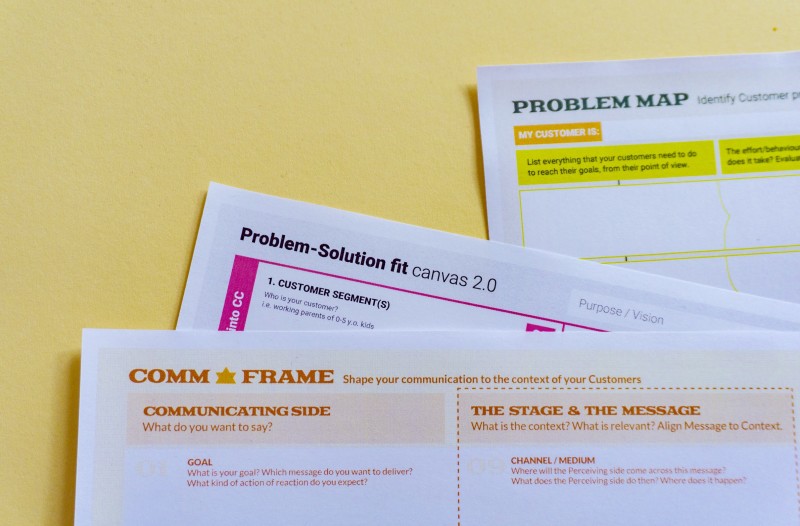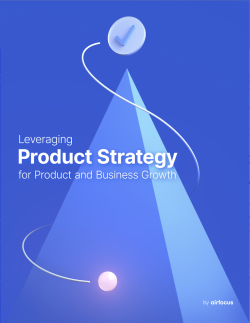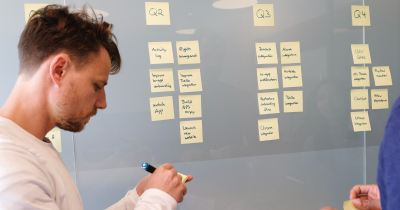
Have you ever discovered that the product management techniques that served you well on past products just don’t seem to be working in your latest effort?
One reason those trusty techniques that may not work is that the product you’re working on now is not at the same stage of the product life cycle as your past products were.
The product lifecycle is the journey each product takes from the inception of an idea through to a product’s retirement.
The lifecycle consists of the following stages:
Development
Introduction
Growth
Maturity
Decline
The lifecycle stage your product is currently in has a big influence over what you focus on.
Here’s a look at the five stages of product lifecycle management and what you as a product manager should focus on while in that stage.
1. Development stage
During the development stage, you and your product team simultaneously perform discovery and delivery. You want to identify the problems you’re trying to solve and create solutions for those that are worth solving.
During the development stage, your product team has a lot of things to consider:
What problem do your customers need to be solved?
Is it worth it to your customers to have that problem solved?
Is it worth it to your organization to help customers solve that problem?
How can you solve the problems that are worth solving
You want to do the proper amount of research to make informed decisions. You also want to release something sooner rather than later so that you can get useful feedback, and generate revenue.
A successful development stage balances the need to make informed decisions and the need to build something that generates revenue.
To understand your customer’s problems you’ll need to talk with your customers to understand the problems they face or the jobs they are trying to get done.
You’ll want to understand the pain points those problems cause and the benefits they can experience when you solve those problems.
There’s also going to be a bit of market research, benchmarking, and competitive analysis to determine if it’s worth it for your organization to solve those problems.
Is anybody else solving those problems for customers? If not why not? Maybe you’ve identified uncharted territory, or maybe others have tried and found it to be a dead end.
If you determine the problem is worth solving, you and your product team then need to identify a solution. You’ll want to establish a hypothesis about what solution will work and then figure out ways to test that hypothesis.
Of course, the way to truly know if your solution will solve your customer’s problems in a way that brings value to your organization is to get it in front of customers.
You’ll want to build something that your customers can try out and provide feedback on. Since there’s a chance that your hypothesis will be wrong you’ll want a fairly short feedback cycle, so build just want you to need to test your hypothesis.
This research, building, testing, and revising should all be a joint effort. You want the perspectives of product people, engineers, and user experience experts to ensure that you’re considering value, viability, feasibility, and usability.
2. Introduction stage of product lifecycle management
Once you release the initial version of your product to the market for testing and iteration, you’ve entered the introduction stage.
During the introduction stage, you’re trying to get to product-market fit.
That means you’re:
Positioning the product from a brand and pricing perspective
What messages resonate with your target audience
Which marketing channels are the most effective
What additional features you should and should not add to the product
Since you’re iterating to get the right mix of pricing, product features, and messaging to reach product market fit, you may generate some revenue, but you may not be generating much profit, yet.
Your role during this stage is to become a subject matter expert on the customer’s problem and how your product solves it. You have to explain what your product can do and why your customers would want to use it. If your organization has an active sales organization, that means you’ll be spending a lot of time with your friends in sales and marketing during this stage.
If you’re tackling a problem that no one else has before, or that customers didn’t realize they had, you're going to spend quite a bit of time generating demand. You want to create awareness about the problem and the unique solution your product provides.

Your product team needs to be quick on its feet during the introduction stage to react to the feedback you’re getting from your customers. You want to remove the friction points that customers identify and you want to accentuate the benefits that your customers identify.
You’ll also need to refine your pricing. You may be able to charge a large initial price if there are no competitors so you have room to move lower when competitors move in. Alternatively, you may have to offer a low initial price to encourage early adopters to try your product out.
As your product starts to gain traction, you’ll want to keep a close eye on analytics to understand who is using your product and which features are resonating the most, That information will inform future roadmap decisions.
3. Growth stage of your product
When your product has proven adoption and traction, you can consider it in the growth stage and you can focus on increasing market share.
You will most likely increase your marketing spending on the messages and channels that you’ve identified as the most effective. You’re also likely to spend more on sales in an effort to drive growth.
The growth stage is also where your product starts to generate more substantial profit margins as the increased sales volume spreads development costs over a larger number of units.
Of course, the more you sell the more attention the market gets from your competition. When they see you selling more products they’ll reason there’s an opportunity there and introduce their own product.
During the growth stage, your focus is on supporting more users and optimizing to accelerate growth. You may find yourself becoming a growth hacker.
Now that you’ve validated that your product has a market, you need to identify the people past your early adopters who will purchase your product.
You’ll also find yourself collecting a lot of data and feedback and making decisions about what to add or take away from the product to attract even more customers.
That of course means that some of the profit that the product generates should get funneled right back into product development.
4. Maturity stage
As growth and rapid customer acquisition start to level off, your product enters the maturity stage. The focus of this stage shifts from growth to retention.
You’ll find yourself interacting more with customer success than sales and marketing. You’ll want to give some thought to how support teams, online accounts, and in-product onboarding can make your product even more delightful for your customers.
Sales and marketing will likely become less of a priority as you begin to invest more heavily in customer success mechanisms, such as support teams, online account areas, and any other elements that may impact how ‘delightful’ your products are to use.
Your product development efforts in this stage center around improvements that will keep your existing customers around and enhancements that provide opportunities for additional revenue from those customers.
Prioritization becomes extremely important during the maturity stage because you want to limit the amount of additional development work you pour into the product. You'll want to ensure that the features you introduce hold on to your existing customers and provide the opportunity to generate additional revenue from them.
There will also be efforts to keep your product differentiated from the competitors who will inevitably try to copy your product’s competitive advantage.
5. Decline stage of the product lifecycle
The decline stage is where demand for your product has reached its peak and is starting to decline. You need to decide whether to pivot, revitalize or sunset the product.
You’ll have to perform some analysis to determine why your product’s market share is declining.
Is the entire market shrinking? Then you’ll want to see if you can target aspects of your product to a new market. Can you use it, with some small modifications to help customers solve other problems?
Is the decline in sales only happening with your product? Then you�’ll want to see if there are things you can do from a marketing standpoint to get former customers back or encourage inactive users to resume activity.
You may discover that with the addition of a few features you can make your product attractive again and close the gaps that may have opened up between your product and your competitors.

And if your product is beyond saving, then you still have some work to do to provide a seamless transition for your product’s remaining customers. If you’re lucky you’ll have a new product that you can transition your customers to. Otherwise, you want to make it easy to switch to an alternative solution so you maintain good relationships with those customers on an ongoing basis.
How to apply the Agile framework to the product lifecycle
There’s a high chance that product managers will need to navigate various changes during the product lifecycle. Working with an Agile product lifecycle allows PMs to respond faster and adapt the development process to meet the new requirements.
As with most Agile practices, the Agile product lifecycle can be broken down into distinct phases:
Discover - Gather as much information as possible about expectations and requirements for the product
Develop - Build the product and adapt to any changes as they crop up
Deployment - Get the product in front of your target audience
Maintenance - Continue to monitor and improve upon the released product
Using Agile methodologies, like Scrum, can help PMs adapt to:
Changing market conditions
Agile methodologies equip product managers with a flexible approach to product development, allowing them to continuously monitor and adapt to shifting market conditions. Product managers can ensure their products remain relevant and aligned with the current market dynamics by regularly reassessing priorities and adjusting development plans.
Customer demands
Customers are incredibly fickle. They’ll see a competitor product has a particular feature and quickly decide they’d like that from your company, too. Agile methodologies enable product managers to engage in ongoing dialogue with customers throughout development.
This creates an iterative feedback loop that helps product managers rapidly incorporate changing customer preferences. This feedback loop ensures that the final product effectively addresses evolving demands and maximizes customer satisfaction.
Technology trends
Technology is evolving at an astonishing rate, making it extremely difficult for product managers to build products that remain relevant upon release. Working with Agile means PMs aren’t clinging to the original plan. They can update the plan as they go, ensuring they’re building something that hasn’t already become outdated.
airfocus can help regardless of what stage of your product lifecycle you’re in
The stage your product is in influences where your focus lies, from deciding what problem to solve to identifying the key features to solve that problem, to selecting that one feature that will really delight your existing customers.
What doesn’t change between stages is the need to make priority decisions, communicate those decisions, and collaborate with your team to enact those decisions.
airfocus helps you make the right product decisions, communicate your product strategy, and build better products faster with strong team collaboration. Start your free trial today to see how to make it happen, regardless of which stage your product is in.
This article was updated in December 2023.

Kent McDonald

Read also

Create effective product strategy

Experience the new way of doing product management







